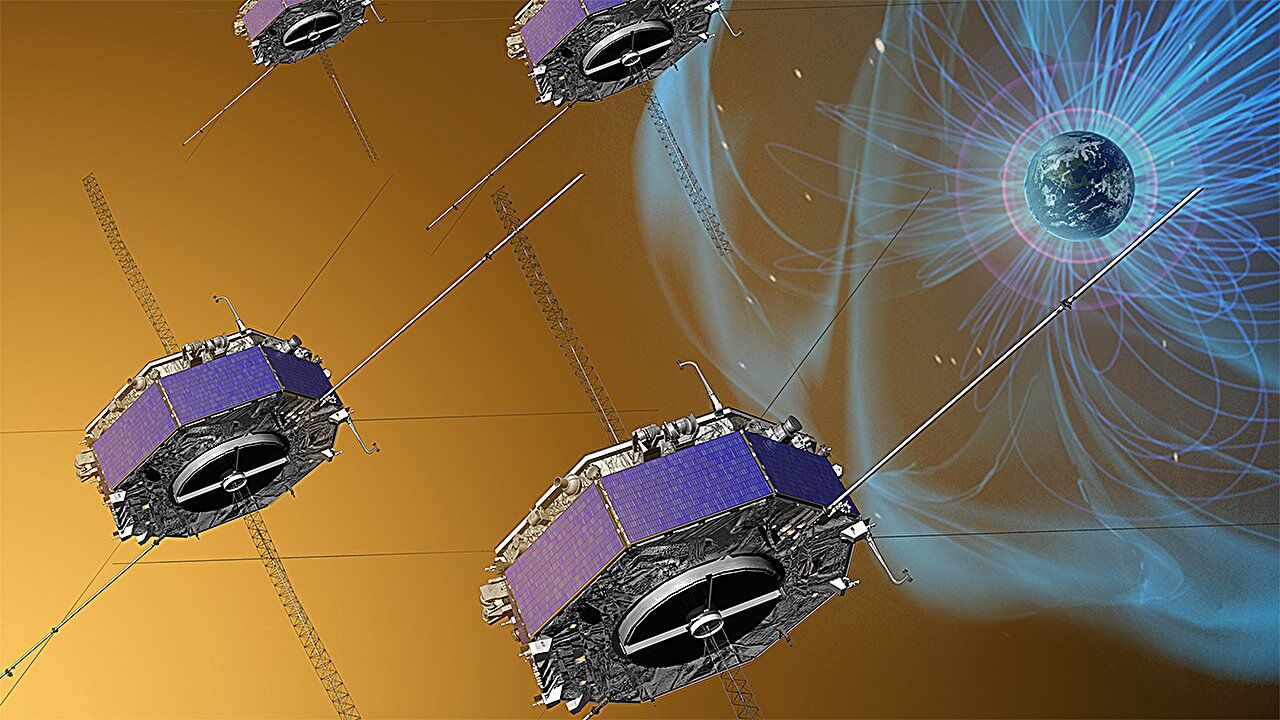🧲 Magnetic oddities identified around Earth
Published by Adrien,
Source: Journal of Geophysical Research: Space Physics
Other Languages: FR, DE, ES, PT
Source: Journal of Geophysical Research: Space Physics
Other Languages: FR, DE, ES, PT
Follow us on Google News (click on ☆)
This mission has allowed for the first observation of a magnetic switchback in Earth's magnetosphere.

The four satellites of the MMS mission studying Earth's magnetic field
Credit: NASA/GSFC
Detailed analysis of the data revealed that this particular structure, called a "switchback" or magnetic reversal, consists of a mixture of plasma from both the solar wind and Earth's magnetosphere. Plasma is a state of matter where atoms are separated into electrically charged electrons and ions, forming a conductive gas. This mixture creates a disturbance that briefly rotates before returning to its initial position, leaving this characteristic zigzag signature in the magnetic field lines.
Researchers E. O. McDougall and M. R. Argall, whose study was published in the Journal of Geophysical Research: Space Physics, estimate that this magnetic switchback formed when the solar wind's magnetic field lines underwent reconnection with part of Earth's magnetic field. This violent process releases enormous amounts of energy and alters the configuration of surrounding magnetic fields, creating these transient but highly recognizable structures.
This discovery opens new perspectives for understanding space weather phenomena. The presence of these magnetic switchbacks near Earth means that the mixing between solar plasma and terrestrial plasma is more complex than previously thought. These interactions can trigger geomagnetic storms that affect satellites, power grids, and create polar auroras.
Studying these phenomena near Earth offers a significant advantage: scientists can now analyze magnetic switchbacks without having to send probes into the solar corona, an extremely hostile region where temperatures reach millions of degrees. This proximity allows for more frequent and detailed observations, thereby accelerating our understanding of the fundamental processes that govern the interaction between stars and their planets.